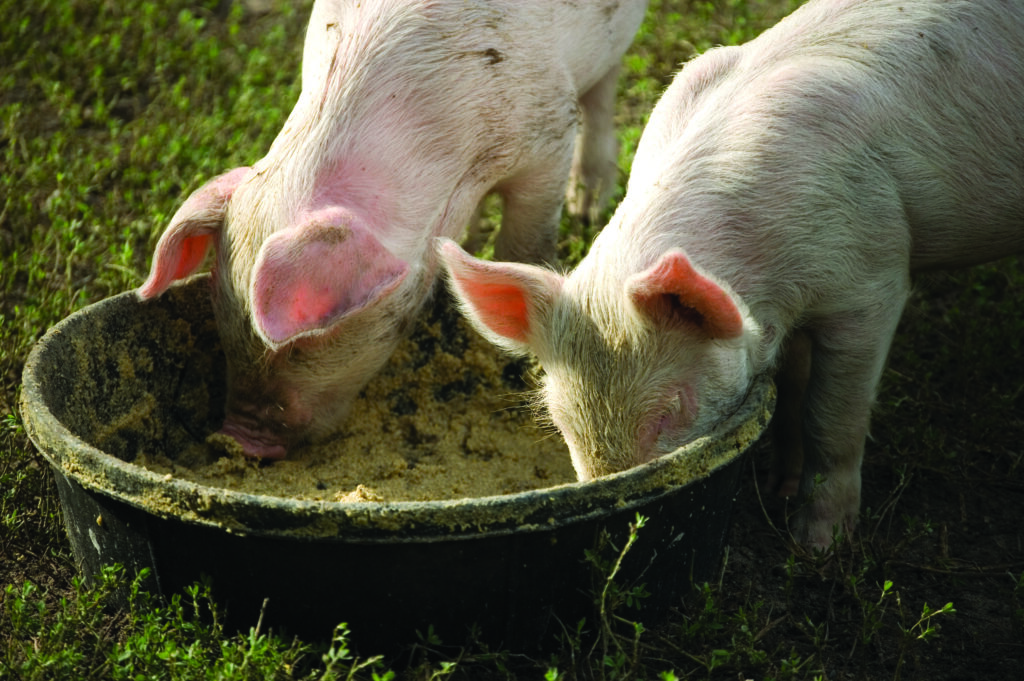The quality of porkmeat has, for a long time, been a concern for consumers in Russia, Belarus and Ukraine. Many believe the product on the shelves is not the same, when compared to the meat sold in the days of Soviet Union, with question marks raised over quality and safety.
In most cases, you could put that down to nostalgia for the old Soviet Union, as there are some who believe everything was better those days and even the grass was greener.
Yet, that view is not without merit, as the system of veterinary and sanitary control in Russia is rather weak and makes for a less-than-transparent production process.
Opinion polls suggest that antibiotic usage is near the top of the list of the public’s concerns – even if they can’t say what the threat is. Estimates from the Russian Institute of Probiotics show that the use of antibiotics in feed increased nearly four-fold between 2005 and 2012.
Nobody actually knows how much antibiotics Russia’s pig farmers are using. Although Russian legislation stipulates strict rules on the presence of antibiotic residues in pork, farmers are free to feed growing pigs with kilogrammes of antibiotics – as long as they are out of the animal’s system by the time it gets to the slaughterhouse.
In any case, the fines for non-compliance are so miserable that it doesn’t hurt the farmer’s finances and fails to act as a deterrent from using non-treatment feed antibiotics.
Denis Morozov, director of scientific research centre AgriBioTechnology, has urged farmers to switch to substitutes, such as probiotics, citing public health concerns.
However, it appears farmers still need to be convinced. A typical response from farmers, who have been consuming their own produce for years, is: “Despite all the dangers of antibiotics, we are still alive”.
I’m sure every pig farmer in Russia would have a similar response.
It’s quite remarkable that the Russian Government is leading a crusade against genetically modified organisms in feed and has taken a tough stance on the use of growth promoters, yet there is complete silence on the subject of in-feed antibiotics.
“Although Russian legislation stipulates strict rules on the presence of antibiotic residues in pork, farmers are free to feed growing pigs with kilogrammes of antibiotics – as long as they are out of the animal’s system by the time it gets to the slaughterhouse”
The good news is that Russian consumers have noticed the campaign against antibiotic usage elsewhere in Europe and, as a result, have become more aware of the threat from antimicrobial resistance and superbugs. Developments may come even sooner in Ukraine, where closer ties with the EU could lead to greater harmonisation of veterinary legislation.
As for Belarus, it seems the issue attracts even less of a conversation than in Russia, despite that fact it is part of the Eurasia Economy Union, which has joint technical regulation on the safety of food products.
Here, there have been no indications that a change in usage of non-treatment antibiotics is imminent, nor any reports of antibiotic-contaminated products in shops or of consumer concern, even.
At least in Russia, there is hope on this subject, courtesy of a new state programme to develop the organic food industry. According to Russia’s Union of Organic Farming, the organic food market amounts to US$120 million, but with nearly 90% of that made up of imported goods.
It should be said that this is not the first time the country’s authorities have promised to establish some legal framework for the organic sector. Previous attempts have failed, so at the moment, it’s no more than a vague intention.
In recent years, all feed antibiotics in Russia were imported and, due to fluctuations of the Russian Ruble exchange rate, this constrained their use by farmers.
But scientists at Russia’s Altai State University, in a joint venture with FarmLab and several other companies, are now marketing domestically-produced feed antibiotics for agricultural animals, including pigs.
The first of these antibiotics, which are promised for the market in 2018, should be cheaper and just as efficient, so scientists believe they will become quite popular among Russian farmers.




